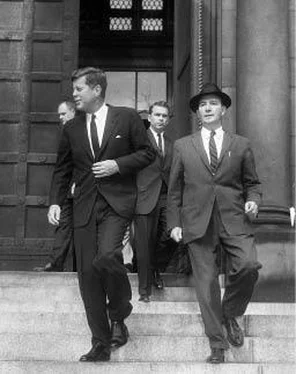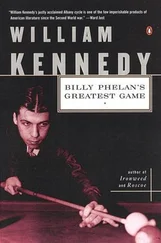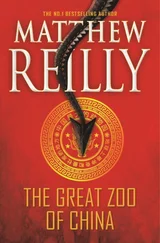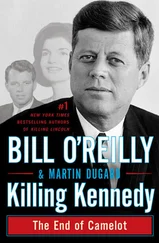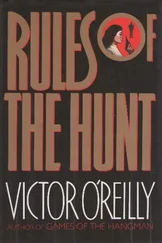O’Reilly, Bill - Killing Kennedy
Здесь есть возможность читать онлайн «O’Reilly, Bill - Killing Kennedy» весь текст электронной книги совершенно бесплатно (целиком полную версию без сокращений). В некоторых случаях можно слушать аудио, скачать через торрент в формате fb2 и присутствует краткое содержание. Год выпуска: 2012, Издательство: Henry Holt and Company, Жанр: Старинная литература, на английском языке. Описание произведения, (предисловие) а так же отзывы посетителей доступны на портале библиотеки ЛибКат.
- Название:Killing Kennedy
- Автор:
- Издательство:Henry Holt and Company
- Жанр:
- Год:2012
- ISBN:нет данных
- Рейтинг книги:5 / 5. Голосов: 1
-
Избранное:Добавить в избранное
- Отзывы:
-
Ваша оценка:
- 100
- 1
- 2
- 3
- 4
- 5
Killing Kennedy: краткое содержание, описание и аннотация
Предлагаем к чтению аннотацию, описание, краткое содержание или предисловие (зависит от того, что написал сам автор книги «Killing Kennedy»). Если вы не нашли необходимую информацию о книге — напишите в комментариях, мы постараемся отыскать её.
Killing Kennedy — читать онлайн бесплатно полную книгу (весь текст) целиком
Ниже представлен текст книги, разбитый по страницам. Система сохранения места последней прочитанной страницы, позволяет с удобством читать онлайн бесплатно книгу «Killing Kennedy», без необходимости каждый раз заново искать на чём Вы остановились. Поставьте закладку, и сможете в любой момент перейти на страницу, на которой закончили чтение.
Интервал:
Закладка:
John Kennedy is out of solutions. He has done all he can to save his men. There is nothing more he can do.
As if in a mirage, Kennedy wakes up to see four natives standing over him. The sun is rising. Ross’s limbs are horribly disfigured from his coral wounds, with one arm swollen to the size of a football. Kennedy’s own body is beginning to suffer from infection.
“I have a letter for you, sir,” one of the natives says in perfect English.
An incredulous Kennedy sits up and reads the note. The natives have taken his coconut to a New Zealand infantry detachment hidden nearby. The note is from the officer in charge. Kennedy, it says, should allow the islanders to paddle him to safety.
So it is that John F. Kennedy is placed in the bottom of a canoe, covered in palm fronds to hide him from Japanese aircraft, and paddled to a hidden location on New Georgia Island. When the canoe arrives at the water’s edge, a young New Zealander steps from the jungle. Kennedy comes out from under his hiding place and climbs out of the canoe. “How do you do?” the New Zealander asks formally. “I’m Lieutenant Wincote.” He pronounces his rank the British way: LEFF -tenant.
“Hello. I’m Kennedy.” The two men shake hands. Wincote nods toward the jungle. “Come up to my tent and have a cup of tea.”
Kennedy and his men are soon rescued by the U.S. Navy. And thus the saga of PT-109 comes to an end, even as the legend of PT-109 is born.
* * *
There is another incident that influences John Kennedy’s journey to the Oval Office. Kennedy’s older brother, Joe, is not as lucky about cheating death. The experimental Liberator bomber in which he is flying explodes over England on August 12, 1944. There is no body to bury and no memento of the tragedy to place on JFK’s desk. But that explosion marked the moment when John F. Kennedy became a politician and began the journey into the powerful office in which he now sits.
* * *
Less than six months after the war ends, John Fitzgerald Kennedy is one of ten candidates running in the Democratic primary of Boston’s Eleventh Congressional District. The veteran politicians and ward bosses of the deeply partisan city don’t give him a chance of winning. But JFK studies each ward in the district, reveling in his role as the underdog. He recruits a well-connected fellow World War II veteran named Dave Powers to help run his campaign. Powers, a rising political star in his own right, is at first reluctant to help the skinny young man who introduces himself by saying, “My name is Jack Kennedy. I’m a candidate for Congress.”
But then Powers watches in awe as Kennedy stands before a packed Legion hall on a cold Saturday night in January 1946 and gives a dazzling campaign speech. The occasion is a meeting of Gold Star Mothers, women who have lost sons in World War II. Kennedy speaks for only ten minutes, telling the assembled ladies why he wants to run for office. The audience cannot see that his hands shake anxiously. But they hear his well-chosen words as he reminds them of his own war record and explains why their sons’ sacrifice was so meaningful, speaking in an honest, sincere voice about their bravery.
Then Kennedy pauses before softly referring to his fallen brother, Joe: “I think I know how all you mothers feel. You see, my mother is a Gold Star Mother, too.”
Women surge forth as the speech concludes. Tears in their eyes, they reach out to touch this young man who reminds each of them of the sons they lost, telling him that he has their support. In that instant, Dave Powers is convinced. He goes to work for “Jack” Kennedy right then and there, forming the core of what will become known as Kennedy’s “Irish Mafia.” It is Dave Powers who seizes on PT-109 as a vital aspect of the campaign, mailing voters a reprint of a story about that August night in 1943 to show the selfless bravery of a wealthy young man for whom some might otherwise not be inclined to vote.
Thanks to Dave Powers’s insistence on making the most of PT-109, John F. Kennedy is elected to Congress.
* * *
During his first months as president, the coconut on which Kennedy carved the rescue note is a reminder of the incident that started him on his path to the White House.
The coconut is also a daily reminder that JFK owes the presidency, in part, to the sharp political intuition of Dave Powers. The tall Boston native, five years JFK’s senior, has been on the Kennedy payroll since that January night in 1946. As special assistant to the president, he is not a cabinet member, or even an official adviser—just a very close friend who always seems to anticipate the president’s needs and whose company the always-loyal JFK enjoys immensely. Powers has been described as the president’s “jester in residence,” and it’s true: his official capacity in the White House is largely social. Dave Powers is willing to do anything for John Kennedy.
But even Dave Powers, with his remarkable powers of intuition, cannot possibly know what “anything” means—nor can he predict that even as he witnessed John Kennedy’s first-ever political speech, he will also witness his last.
2
FEBRUARY 1961
THE WHITE HOUSE
1:00 P.M.
The president of the United States is naked, and on schedule. Almost every afternoon, at precisely 1:00 P.M., he slips into the indoor pool—always heated to a therapeutic ninety degrees—located between the White House and the West Wing. John Kennedy does this to soothe his aching back, a problem for him ever since he was a student at Harvard. His ordeal with the Amagiri exacerbated his back problems, and he has even endured surgery—to no avail. The pain is constant and so excruciating that Kennedy often uses crutches or a cane to get around, though rarely in public. He wears a corset, sleeps on an extra-firm mattress, and receives regular injections of the anesthetic procaine to ease his suffering. Aides know to look for a tightening of his jaw as a sign that the president’s back is acting up. The half hour of breaststroke and the heat of the pool are part of Kennedy’s therapy. His lack of a bathing suit for many of those swims stems from his notion of manliness. Real men do the breaststroke au naturel, and that’s that.
The White House staff could never imagine the previous president, Dwight Eisenhower, swimming naked anywhere, anytime. The elderly general and his wife, Mamie, were as traditional as they come. Very little unexpected happened in the White House during the eight years the Eisenhowers lived there.
But now everything has changed. The Kennedys are much less formal than the Eisenhowers. Smoking is allowed in the staterooms. Receiving lines are being abolished, giving formal functions a more casual feel. The First Lady is having a stage set up in the East Room, to allow performances by some of America’s most notable musicians, such as cellist and composer Pablo Casals and singer Grace Bumbry.
Still, the White House is a serious place. The president’s daily schedule revolves around periods of intense work followed by restorative breaks. He rises each morning around seven and immediately begins reading the news of the day in bed, including dispatches from the New York Times , the Washington Post , and the Wall Street Journal . Kennedy is a speed-reader, capable of absorbing twelve hundred words every sixty seconds. He is done with the newspapers in just fifteen minutes, and then moves on to a pile of briefing books covering events going on around the world.
The president then takes breakfast in bed. It is a substantial meal: orange juice, bacon, toast slathered in marmalade, two soft-boiled eggs, and coffee with cream. By and large, he is not a huge eater. He meticulously keeps his weight at or below 175 pounds. But he is a creature of habit and eats the same breakfast almost every day of the week.
Читать дальшеИнтервал:
Закладка:
Похожие книги на «Killing Kennedy»
Представляем Вашему вниманию похожие книги на «Killing Kennedy» списком для выбора. Мы отобрали схожую по названию и смыслу литературу в надежде предоставить читателям больше вариантов отыскать новые, интересные, ещё непрочитанные произведения.
Обсуждение, отзывы о книге «Killing Kennedy» и просто собственные мнения читателей. Оставьте ваши комментарии, напишите, что Вы думаете о произведении, его смысле или главных героях. Укажите что конкретно понравилось, а что нет, и почему Вы так считаете.
